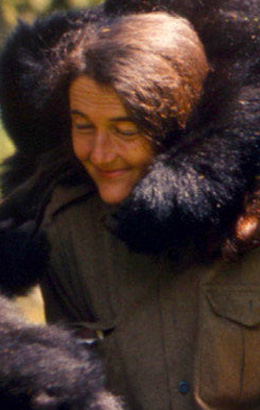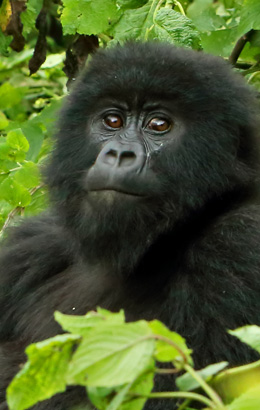The conflict in eastern Democratic Republic of Congo has shaped life in this region for decades. Armed groups have operated…
Landmark study shows the secret to saving gorillas
Community conservation has always been at the heart of the Gorilla Organization’s work. It’s a recognition that including local people in long term planning is key to building a more resilient future for all species of gorilla.
Such an approach has not always been popular. Indeed, the Gorilla Organization has been a pioneer, moving away from the old top-down approach of wildlife conservation and instead embracing a grassroots model. But it has undoubtedly been effective. And slowly but surely, the global conservation community has shifted to a community-based approach, one key reason why the future may be looking brighter for endangered species everywhere.

More effective conservation
Signed by the world’s governments just two years ago, the Kunming-Montreal Global Biodiversity Framework aims at reversing biodiversity loss by 2030. Given the alarming decline in lowland gorillas in particular, this goal may seem daunting, even impossible. However, the data shows this inclusive approach is working. A brand-new University of Oxford meta-analysis of almost 200 studies from around the world concluded that “conservation is getting more effective over time”.
Certainly, mountain gorillas have been brought back from the edge of extinction, from fewer than 600 at the start of the millennium to around 1,100 now. But the job is far from done. Even mountain gorillas remain highly vulnerable, at the mercy of poachers and militias, with their habitat shrinking at a rapid rate. Even more at risk are eastern lowland gorillas, classed as one step away from being lost for good. What hope there is lies in frontline, community-led efforts.
The Gorilla Organization continues to lead the way. By taking a ‘whole of family approach’, men are supported as they shift from poaching to more sustainable livelihoods, women are empowered to organize, educate, and run communities without relying on the forests, and children are inspired into action in their schools and homes.
As Director Jillian Miller explains, “We have always worked directly with the communities to find the right balance between keeping gorillas safe and helping people thrive, not just survive. The two go hand-in-hand, and the results speak for themselves: lives are transformed, communities uplifted and the underlying threats facing gorillas undermined and even eradicated.”
This story has been reprinted from Digit News Summer 2024. To download the full issue please click here.
Make a difference – help today!
More News

Why the conflict in eastern DRC is so dangerous for gorillas

Gorillas stay stable, but remain “Critically-Endangered”
Despite the recent and ongoing insecurity in eastern DR Congo, the status of gorillas in the wild remains largely stable.…

Remembering Jane Goodall – a true friend of the gorillas
Dr Jane Goodall, the visionary primatologist and tireless environmental campaigner, has died at the age of 91. Her groundbreaking work…















